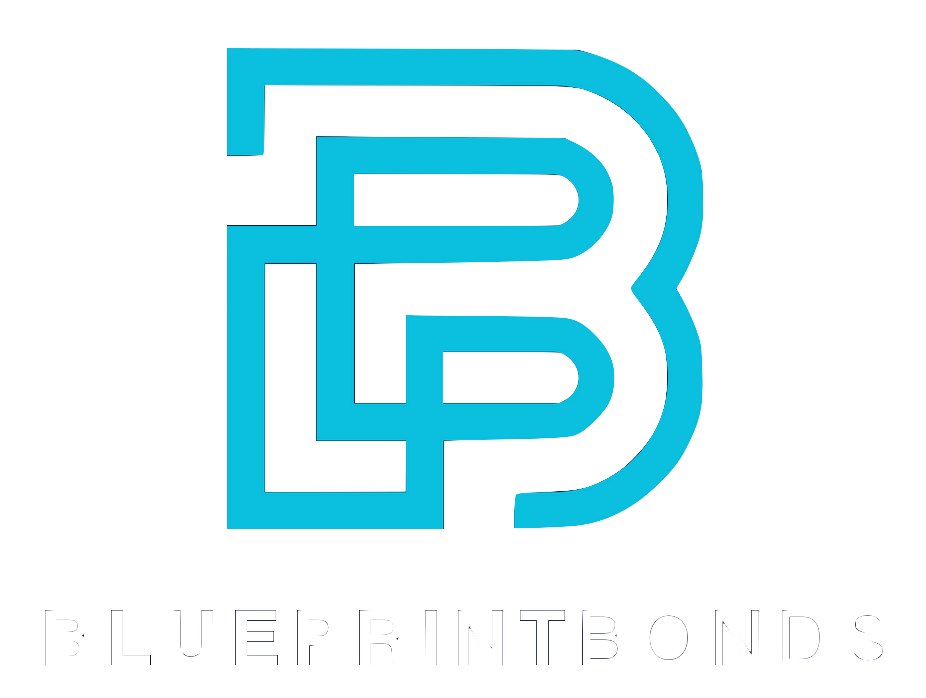Entering the bidding phase for construction projects can be a daunting process, especially when faced with prequalification reviews. These evaluations are designed to ensure that contractors meet the necessary standards for safety, financial stability, and experience before being considered for a project. While prequalification might seem like an administrative hurdle, understanding its purpose and how to navigate it effectively can save contractors significant time, money, and stress.
State transportation departments, for example, reject an average of 7.6% of new prequalification applicants, a stark contrast to the 0.4% rejection rate for renewals, highlighting the importance of a strong initial application. This guide will explore practical strategies and insights to help contractors pass prequalification reviews smoothly and position themselves as reliable partners in construction projects. For more detailed information on state prequalification practices, the Federal Highway Administration provides valuable resources.
Understanding the Importance of Prequalification
Prequalification serves as a critical gatekeeper in the construction industry, filtering contractors to ensure only those capable of delivering quality work safely and on time are selected. This process assesses a contractor’s financial health, experience, safety records, and equipment availability, among other factors. By establishing a baseline of qualifications, project owners can streamline the bidding process, focusing on contractors who meet or exceed the necessary criteria, thus saving time and resources during the selection phase.
One of the main reasons prequalification is emphasized is risk management. When subcontractors default, the cost to hire replacements can be 1.5 to 3 times the original contract value, a significant financial burden for any project. By vetting contractors thoroughly upfront, project owners and general contractors mitigate these risks, avoiding costly delays and disputes. This proactive approach not only safeguards the project timeline but also fosters a collaborative environment where all parties can focus on delivering results rather than managing crises.
Moreover, contractors who engage in third-party prequalification programs demonstrate superior safety performance. According to the National Safety Council, such contractors have Total Recordable Incident Rates (TRIR), Days Away, Restricted, or Transferred (DART) rates, and Lost Workday Rates (LWR) that are 34%, 48%, and 65% better, respectively, than national averages. This not only protects workers but also enhances a contractor’s reputation and competitiveness. A strong safety record can lead to lower insurance premiums and better bonding capacity, which are crucial for securing future projects and maintaining a robust business profile.
Additionally, prequalification processes often include evaluations of a contractor's past project performance and client feedback. This qualitative aspect allows project owners to gauge a contractor's reliability and commitment to quality beyond mere numbers. By examining case studies and testimonials, stakeholders can better understand how a contractor navigates challenges, communicates with clients, and adheres to project specifications. Such insights are invaluable, as they reveal the contractor's ability to maintain high standards under pressure, ultimately influencing the success of the project.
Furthermore, the prequalification process can also encourage contractors to invest in continuous improvement initiatives. Knowing that their qualifications will be scrutinized, many contractors seek to enhance their operational practices, training programs, and safety protocols. This culture of improvement not only benefits the contractors themselves but also elevates the overall standards within the industry. As more contractors strive for excellence, the construction landscape becomes increasingly competitive, leading to better quality work and safer job sites for everyone involved.
Key Criteria Evaluated in Prequalification Reviews
Understanding what evaluators look for is the first step toward a successful prequalification. While requirements vary by state and project, several core criteria consistently emerge as critical:
Financial Stability
Financial resources are a primary concern for prequalifiers. Contractors must demonstrate they have the capital or bonding capacity to handle the project’s scope without jeopardizing their operations. This includes providing financial statements, proof of bonding, and evidence of insurance coverage. A strong financial foundation reassures project owners that the contractor can withstand unforeseen challenges.
Moreover, evaluators often look for a contractor's credit history and banking relationships, as these factors can provide additional insight into their financial health. A contractor with a solid credit rating is typically viewed as more trustworthy and capable of securing necessary funding for project completion. Additionally, maintaining a diverse portfolio of projects can further enhance a contractor's financial stability by spreading risk and ensuring a steady stream of revenue.
Experience and Past Performance
Experience is more than just years in business; it’s about proven success in similar projects. Prequalification panels often review past performance records, including project completion times, quality of work, and client satisfaction. A study on contractor selection criteria highlights that past performance, financial stability, and experience are the most critical factors influencing project success in terms of time, cost, and quality.
Documenting relevant projects and providing references can significantly strengthen an application. Many states require detailed project histories as part of their prequalification process, emphasizing the importance of transparency and accuracy. Furthermore, showcasing innovative solutions or unique approaches taken in past projects can set a contractor apart from competitors, demonstrating not only their capability but also their adaptability to various challenges encountered during construction.
Safety Records and Compliance
Safety is paramount in construction. Prequalification reviews typically include an assessment of safety metrics such as the Experience Modification Rate (EMR) and recordable injury rates. A comprehensive approach combining leading and lagging safety indicators helps evaluators gauge a contractor’s commitment to maintaining a safe work environment.
Contractors who maintain low injury rates and demonstrate proactive safety management are more likely to pass prequalification and be viewed as reliable partners. For insights on safety performance indicators in prequalification, the MDPI study on safety metrics offers an in-depth analysis. Additionally, a contractor’s engagement in ongoing safety training programs and certifications can further enhance their credibility. By investing in their workforce's safety education, contractors not only comply with regulations but also foster a culture of safety that can lead to improved morale and productivity on job sites.
Preparing Your Prequalification Submission
Preparation is key to reducing stress and increasing the chances of passing your prequalification review. Here are some practical steps to consider:
Organize Your Documentation
Ensure that all required documents are complete, accurate, and up to date. This typically includes financial statements, safety records, insurance certificates, bonding information, and a portfolio of past projects. Keeping these documents organized and readily accessible can streamline the application process and prevent delays. Furthermore, consider creating a checklist to track the status of each document, ensuring nothing is overlooked. This proactive approach not only enhances your submission but also reflects your attention to detail, a quality that evaluators highly value.
Leverage Technology for Efficiency
Technology is transforming the prequalification landscape. Over 25% of contractors now regularly use specialized solutions to enhance their prequalification process before submitting bids. These tools help automate data collection, track compliance, and provide real-time updates, reducing manual errors and improving transparency.
Adopting such technologies not only speeds up the process but also demonstrates to evaluators that your company embraces innovation and efficiency. For more on prequalification technology trends, BuiltWorlds offers valuable insights. Additionally, consider utilizing cloud-based platforms that allow for collaborative document management, enabling team members to contribute and review submissions from anywhere. This flexibility can lead to a more comprehensive and polished final product.
Highlight Your Strengths
Use your submission to showcase your company’s unique advantages. Emphasize your safety record improvements, financial resilience, and successful project completions. Including testimonials or case studies can provide concrete evidence of your capabilities and reliability. Moreover, consider incorporating metrics that quantify your achievements, such as percentage reductions in project completion times or cost savings realized for clients. These statistics not only bolster your narrative but also help evaluators visualize the tangible benefits of partnering with your firm.
Additionally, don't hesitate to include any awards or certifications your company has received. These accolades serve as third-party endorsements of your quality and commitment to excellence, further strengthening your position in the competitive landscape. By weaving these elements into your submission, you create a compelling story that resonates with decision-makers and sets your company apart from the competition.
Common Challenges and How to Overcome Them
Even experienced contractors can face hurdles during prequalification. Being aware of these challenges can help you prepare and respond effectively.
New Applicant Rejections
New applicants face a higher rejection rate—7.6% on average—compared to renewals. This often results from incomplete documentation or lack of demonstrated experience. To overcome this, new contractors should focus on building a robust portfolio, securing strong financial backing, and possibly partnering with more experienced firms to gain credibility. Additionally, attending industry networking events can provide new contractors with valuable insights and connections that may lead to mentorship opportunities. Engaging in workshops or training sessions can also enhance their skills and knowledge, making them more competitive in the prequalification process.
Keeping Safety Data Up to Date
Safety data is dynamic and requires ongoing attention. Contractors should regularly update their safety metrics and ensure compliance with OSHA and other regulatory standards. Implementing a continuous safety improvement program can help maintain favorable records and impress prequalification reviewers. Furthermore, utilizing technology such as safety management software can streamline the process of tracking incidents and compliance, allowing contractors to quickly generate reports that reflect their commitment to safety. Regular safety audits and employee training sessions can also reinforce a culture of safety within the organization, ensuring that all team members are aware of best practices and protocols.
Managing Risk as an Evolving Process
Risk management is not a one-time task but a continuous journey. Catherine Sharp, Compliance Administrator at Choate Construction Company, emphasizes that prequalification and risk management are "ever-evolving processes." Staying proactive by reviewing and improving your risk controls, safety programs, and financial strategies will keep your company prepared for future evaluations. Additionally, establishing a risk management committee within your organization can facilitate ongoing discussions about potential risks and mitigation strategies. This committee can also be responsible for conducting regular risk assessments, ensuring that all aspects of the business are considered and that the company remains adaptable to changing market conditions. Engaging with external consultants or industry experts can provide fresh perspectives and innovative solutions to emerging risks, further enhancing your overall risk management framework.
Benefits of Successfully Passing Prequalification
Passing prequalification reviews without stress opens the door to more bidding opportunities and stronger industry relationships. Contractors who consistently meet or exceed prequalification standards are often preferred partners, leading to repeat business and referrals.
Furthermore, a strong prequalification record signals to clients that your company values safety, quality, and reliability. This can differentiate you in a competitive market and contribute to long-term growth.
Investing time and resources into mastering the prequalification process ultimately pays off by reducing the risk of subcontractor defaults, which can be costly and disruptive. For a deeper understanding of the financial impact of subcontractor defaults, Autodesk’s blog on prequalification provides an excellent overview.
Moreover, successfully navigating the prequalification process can enhance your company's reputation within the industry. When clients see a consistent track record of compliance and excellence, they are more likely to trust your capabilities and consider you for high-stakes projects. This trust can lead to more significant contracts and partnerships, as well as opportunities to collaborate with other reputable firms, thereby expanding your network and influence.
Additionally, the prequalification process often encourages companies to adopt best practices in project management and operational efficiency. By aligning with industry standards and continuously improving your processes, you not only increase your chances of winning bids but also foster a culture of excellence within your organization. This proactive approach can lead to innovations that set you apart from competitors, ultimately driving your business forward in a dynamic market.
Final Thoughts
Prequalification reviews are a vital part of the construction industry’s effort to ensure projects are completed safely, on time, and within budget. While the process may seem complex, understanding the key criteria and preparing thoroughly can make it manageable and even advantageous.
By focusing on financial stability, experience, safety, and leveraging modern technology, contractors can reduce stress and increase their chances of success. Remember, prequalification is not just a hurdle but an opportunity to demonstrate your company’s strengths and commitment to excellence.
Embracing this mindset will help contractors not only pass prequalification reviews but also build lasting partnerships and a strong reputation in the industry.
Moreover, the importance of maintaining an up-to-date portfolio cannot be overstated. A well-documented history of past projects, complete with testimonials and performance metrics, can serve as a powerful tool during the prequalification process. Clients and stakeholders are increasingly looking for evidence of a contractor's ability to deliver quality work, and showcasing successful projects can significantly enhance credibility. This not only highlights the contractor's experience but also provides tangible proof of their commitment to safety and adherence to industry standards.
In addition, the integration of technology in the prequalification process is becoming increasingly essential. Utilizing software solutions for project management and risk assessment can streamline the process, making it easier to compile necessary documentation and track compliance with safety regulations. Furthermore, adopting innovative construction practices, such as sustainable building methods or advanced project management tools, can set a contractor apart from the competition. By staying ahead of industry trends and continuously improving operational processes, contractors can not only meet but exceed the expectations of potential clients, ultimately leading to greater opportunities in the marketplace.




